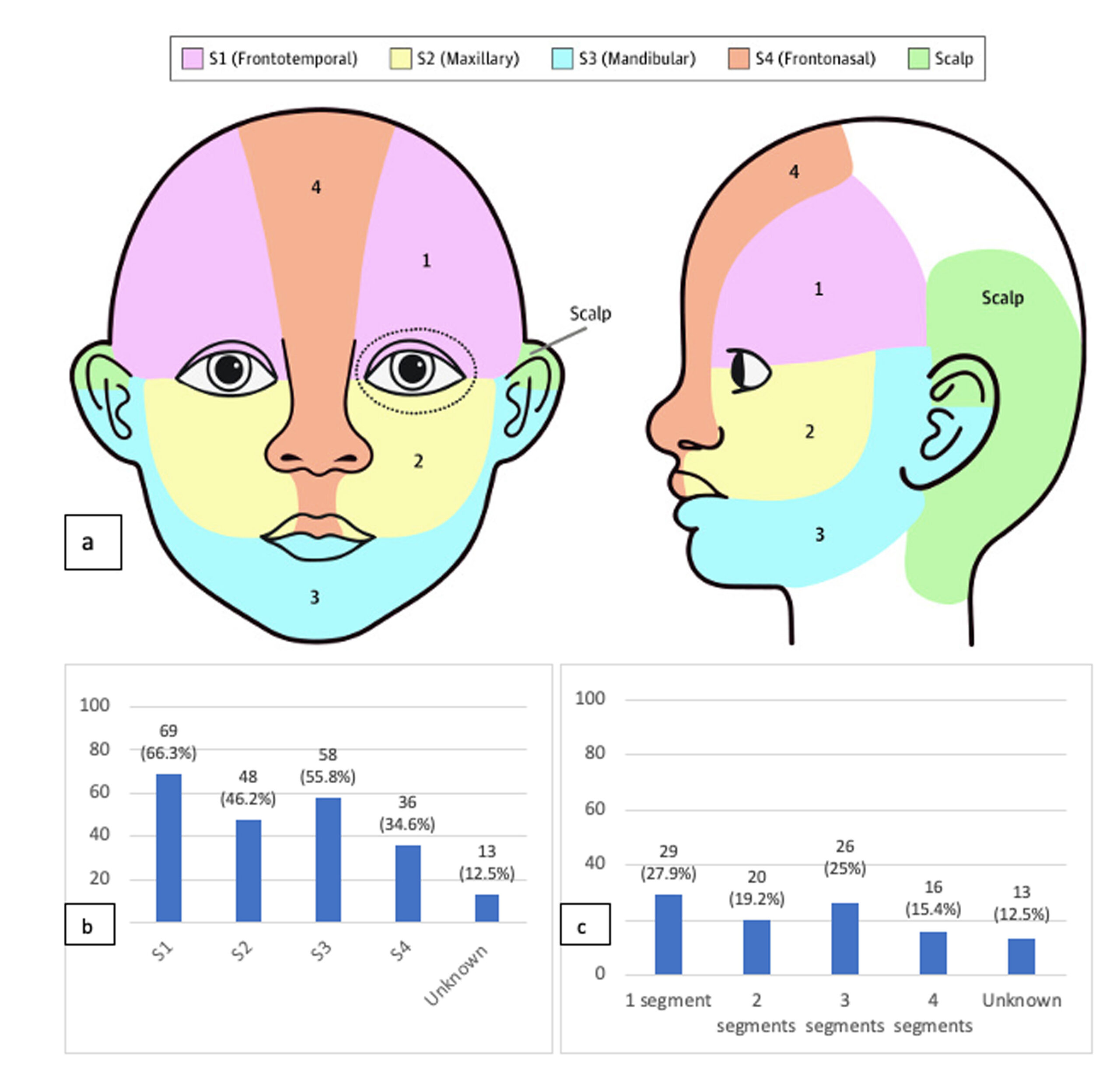The neurocutaneous syndrome PHACES is a non-familial disorder that affects up to 1/3 of patients with segmental hemangiomas.
Patients with PHACES have segmental hemangiomas and associated structural abnormalities including the following: Posterior fossa malformations, Hemangiomas, Arterial abnormalities, Cardiac defects, Eye abnormalities, and Sternal or ventral defects).
Based on studies of hemangioma patterns, there are four primary facial segments (see image below):
- Segment 1 (S1): frontotemporal region
- Segment 2 (S2): maxillary region respecting the nasomedial sulcus
- Segment 3 (S3): mandible, chin, and lower lip
- Segment 4 (S4): medial frontal scalp, nasal bridge, and philtrum
Large hemangiomas involving the S1 segment confer a high risk of ipsilateral cerebrovascular anomalies including aberrant origin of the principal cerebral arteries, hypoplasia of vessels, progressive vasculopathy with arterial occlusions or stenosis, and saccular aneurysms.
Failure to recognize aberrant or stenotic vasculature prior to initiating propranolol can have devastating consequences, as relative hypotension can decrease perfusion through already compromised vasculature.
